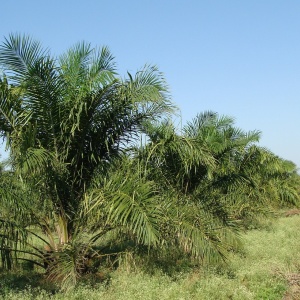
This paper examines the effectiveness of different forms of ecological compensation schemes - i.e. offsetting biodiversity lost to developments such as oil palm plantations or mines - in achieving “No Net Loss” of biodiversity. Using simulations of four case studies, it finds that none of the 18 ecological compensation policy designs studied would achieve No Net Loss of native vegetation extent.
The 18 policy designs were based on combinations of:
- Approach:
- Averting loss that would otherwise have been likely to happen by protecting existing native vegetation at a different site
- Improvement: revegetating land devoid of native vegetation
- Trade:
- Out-of-kind: biodiversity gained can be a different kind to that lost to development
- In-kind: biodiversity agained must be the same kind lost to development
- Trading up: additional gains - biodiversity gained is the kind that would be most likely to be lost without intervention
- Trading up: rarity - biodiversity gained is the most rare kind
- Prioritisation:
- Compensation outside protected areas
- Compensation within 10 km of protected areas
- Compensation within protected areas
One of the main factors limiting success was that there was not enough land available for compensation in some case study regions, either as cleared land that could be used to restore ecosystems, or as existing native vegetation that is not already protected.
Another factor limiting success was the amount of biodiversity expected to be lost or gained regardless of the developments and their compensation schemes. Policies that revegetated land performed less well in places where vegetation commonly and quickly regrows to a form similar to native ecosystems - in other words, there was less additional benefit from revegetating land in these cases.
Abstract
Many nations use ecological compensation policies to address negative impacts of development projects and achieve No Net Loss (NNL) of biodiversity and ecosystem services. Yet, failures are widely reported. We use spatial simulation models to quantify potential net impacts of alternative compensation policies on biodiversity (indicated by native vegetation) and two ecosystem services (carbon storage, sediment retention) across four case studies (in Australia, Brazil, Indonesia, Mozambique). No policy achieves NNL of biodiversity in any case study. Two factors limit their potential success: the land available for compensation (existing vegetation to protect or cleared land to restore), and expected counterfactual biodiversity losses (unregulated vegetation clearing). Compensation also fails to slow regional biodiversity declines because policies regulate only a subset of sectors, and expanding policy scope requires more land than is available for compensation activities. Avoidance of impacts remains essential in achieving NNL goals, particularly once opportunities for compensation are exhausted.
Reference
Sonter, L.J., Simmonds, J.S., Watson, J.E., Jones, J.P., Kiesecker, J.M., Costa, H.M., Bennun, L., Edwards, S., Grantham, H.S., Griffiths, V.F. and Jones, K., 2020. Local conditions and policy design determine whether ecological compensation can achieve No Net Loss goals. Nature Communications, 11(1), pp.1-11.
Read the full paper here. See also the Foodsource resource How do food systems affect land-use and biodiversity?







Post a new comment »